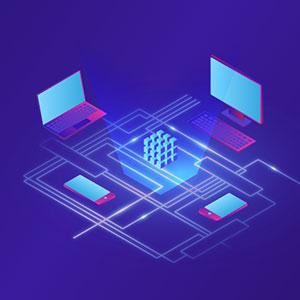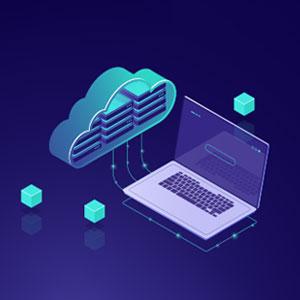Full Stack Data Science Course
Our full stack data science course masters program help you to become a job-ready Data Scientist and get a competitive advantage that leads to new career opportunities.
Industrial Trainers Support
Work on Real Time Projects
One-on-one Sessions
100% Job Assurance
Full Stack Data Science Course Overview
Opting for this full-stack data science program if you want skills to build your own Machine Learning & Neural Network powered applied AI applications!
Over the last years, the demand for Python professionals and AI and Machine Learning skills has been highest among Analytics recruiters.
Theoretical concepts of Artificial Intelligence are not plentiful for using it for practical applications, and that is where Applied AI comes into the picture. Through this Full-stack data science course, you will learn multiple aspects of Data Science, Machine, and Deep Learning, which are needed for applying, both conceptually and practically, to meet tangible business objectives.
What makes this the best full-stack data science course is that you start your journey from basics by learning essential tools like Python and relevant Data Science libraries.
The course curriculum covers data extraction, wrangling, essential statistical concepts, supervised & unsupervised machine learning, and deep learning techniques for powering various AI applications. One of the few data science master’s programs In that is also apt for beginners looking to begin their journey in Data Science.
After successful completion of this course, you will master not only the theory but learn how it is done in practical form in the industry. Considering the practical application-based curriculum, this is the best among multiple full-stack data science courses in India for candidates looking for an industry-relevant AI ML certification from an established & eminent Institute.
Full Stack Data Science Course Curricullum
- Chapter 1.1 : Basic Excel
- Chapter 1.2 : Basic Programming Elements
- Chapter 1.3 : Introduction of Basic Statistics
- Chapter 1.4 : Overview of Dashboard
- Chapter 1.5 : Business dashboard creations
- Chapter 1.6 : RDBMS AND SQL (Basic)
- Chapter 1.7 : Data manipulation using functions
- Chapter 1.8 : Data Visualization in Excel
- Chapter 1.9 : Introduction to Analytics & Data Science
- Chapter 1.10 : Create dashboard in Excel – Using pivot controls
- Chapter 2.1 : Intro to RDBMS & Basic SQL
- Chapter 2.2 : Data Based Object Creation (DDL commands)
- Chapter 2.3: Data Manipulation
- Chapter 2.4: Accessing data from multiple tables using Select
- Chapter 2.5: Advanced SQL
- Chapter 3.1 : Data Analytics with VBA
- Chapter 3.2: A look at some commonly used code snippets
- Chapter 3.3 : Programming Constructs in VBA
- Chapter 3.4 : Functions & Procedures in VBA-Modularizing your programs
- Chapter 3.5 : Objects & Memory Management in VBA
- Chapter 3.6 : Error Handling
- Chapter 3.7 : Controlling accessibility of your code – Access Specifiers
- Chapter 3.8 : Code reusability – Adding references and components of
your code - Chapter 3.9 : How VBA works with Excel
- Chapter 3.10 : Key Component of programming language
- Chapter 3.11 : Communicating with your users
- Chapter 4.1 : Getting Started
- Chapter 4.2 : Data handlings & Summaries – I
- Chapter 4.3 : Data handlings & Summaries – II
- Chapter 4.4 : Building Advanced Reports/Maps
- Chapter 4.5 : Calculated Fields
- Chapter 4.6 : Table Calculations
- Chapter 4.7 : Parameters
- Chapter 4.8 : Buildings Interactive Dashboard
- Chapter 4.9 : Building Stories
- Chapter 4.10 : Work with data
- Chapter 4.11 : Sharing work with others
- Chapter 5.1 : Introduction to R
- Chapter 5.2 : Installation of R Software
- Chapter 5.3 : Basics of R Programming
- Chapter 5.4 : Modular Programming – Packages
- Chapter 5.5 : Data Types & Data structures
- Chapter 5.6 : Other Programming Elements
- Chapter 5.7 : Importing & Exporting data
- Chapter 5.8 : Understanding of data
- Chapter 5.9 : Data Preparation/manipulation of data
- Chapter 5.10 : Basic Statistics
- Chapter 5.11 : Data Visualization
- Chapter 5.12 : Shiny
- Chapter 5.13 : Introduction to Modelling
- Chapter 5.14 : Linear Regression
- Chapter 5.15 : Logistic Regression
- Chapter 5.16 : Segmentation
- Chapter 5.17 : Forecasting
- Chapter 5.18 : Machine Learning
- Chapter 5.19 : Deep Learning Basics
- Chapter 5.20 : Text Mining
- Chapter 6.1 : Introduction to the field of Data Science and Python
- Chapter 6.2 : Data Types and Structures of Core Python
- Chapter 6.3 : Role of Modular Programming in Python
- Chapter 6.4 : Vectorized Data Structures: Numpy Array and Pandas Series
- Chapter 6.5 : Data Mining (Basic)
- Chapter 6.6 : Data Mining (Intermediate)
- Chapter 6.7 : Data Mining (Advanced)
- Chapter 6.8 : Data Quality check
- Chapter 6.9 : Data Visualization
- Chapter 6.10 : Descriptive Statistics
- Chapter 6.11 : Understanding Probability Distribution
- Chapter 6.12 : Hypothesis Testing
- Chapter 6.13 : Finding Business Insights using Statistics
- Chapter 6.14 : Combining Data Mining and Statistics
- Chapter 6.15 : Introduction to Predictive Modeling
- Chapter 7.1 : Encoding and Binning
- Chapter 7.2 : Basics of Regression
- Chapter 7.3 : Regression Model Building : Pre-Modeling
- Chapter 7.4 : Regression Model Building : Modeling
- Chapter 7.5 : Regression Model Building – Post Modeling
- Chapter 7.6 : Basics of Classification using Logistic Regression
- Chapter 7.7 : Classification Model Building : Pre-Modeling & Modeling
- Chapter 7.8 : Classification Model Building : Post Modeling
- Chapter 7.9 : Introduction to Machine Learning
- Chapter 7.10 : Decision Trees
- Chapter 7.11 : K Nearest Neighbour
- Chapter 7.12 : Naive Bayes
- Chapter 7.13 : Support Vector Machines
- Chapter 7.14 : Ensemble Learning
- Chapter 7.15 : Creating a UDF to apply all functions in a single go (pipeline)
- Chapter 8.1 : Introduction to Unsupervised Models
- Chapter 8.2 : Heuristic Segmentation
- Chapter 8.3 : Scientific Segmentation : Theory
- Chapter 8.4 : Scientific Segmentation : Application
- Chapter 8.5 : Introduction to Forecasting
- Chapter 8.6 : Forecasting Algorithms
- Chapter 8.7 : Solving Univariate and Multivariate Forecasting Problems in
Python - Chapter 8.8 : Introduction to Text Mining
- Chapter 8.9 : Exploring methods of Data Acquisition and Cleaning
- Chapter 8.10 : Feature Reduction in Text Mining using NLP
- Chapter 8.11 : Creating a Text Classification Model
- Chapter 8.12 : Creating a Text based Segmentation Model
- Chapter 8.13 : Interactive Dashboard in Python
- Chapter 8.14 : Automating Report Generation using Streamlit
- Chapter 8.15 : Deploying a Prediction Model using Streamlit
- Chapter 9.1 : Introduction to Artificial Intelligence
- Chapter 9.2 : Artificial Neural Networks – I
- Chapter 9.3 : Artificial Neural Networks – II
- Chapter 9.4 : Convolutional Neural Networks – I
- Chapter 9.5 : Convolutional Neural Networks – II
- Chapter 9.6 : Recurrent Neural Networks – I
- Chapter 9.7 : Recurrent Neural Networks – II
- Chapter 9.8 : Recurrent Neural Networks – III
- Chapter 9.9 : Self Organising Maps – I
- Chapter 9.10 : Self Organising Maps – II
- Chapter 9.11 : Boltzmann Machine – I
- Chapter 9.12 : Boltzmann Machine – II
- Chapter 9.13 : Boltzmann Machine – III
- Chapter 9.14 : Auto Encoders – I
- Chapter 9.15 : Auto Encoders – II
- Chapter 10.1 : Starting with Big Data and HDFS
- Chapter 10.2 : Working with MapReduce
- Chapter 10.3 : Using Apache Sqoop
- Chapter 10.4 : Apache Hive – Basic
- Chapter 10.5 : Apache Hive – Advanced
- Chapter 10.6 : Hbase
- Chapter 10.7 : Scala
- Chapter 11.1 : Spark – Basics
- Chapter 11.2 : Spark – Advanced
- Chapter 11.3 : Spark – DataFrame
- Chapter 11.4 : Spark – Optimization
- Chapter 11.5 : Spark – Streaming
- Chapter 11.6 : Apache Kafka
- Chapter 11.7 : Cloud Computing with AWS – Athena
- Chapter 11.8 : Cloud Computing with AWS – RedShift
- Chapter 11.9 : AirFlow
Who Should Do?
Candidates from different technical or quantitative backgrounds, like Engineering, Maths, Statistics, and Business Management, are looking for advanced analytics, AI, and machine learning skills and excel in advanced applications of AI & Machine Learning.
FAQ
Image classification for inventory management (AI DL), Machine Language Translation (French to English & Hindi to English), Stock price forecasting (Deep Learning), Image classification project (AI DL), Credit Card fraud detection (Deep Learning), Automated image captioning (AI DL), Age detection using images (AI DL), Toxic comments classification (Deep Learning)
Large Scale Analytics in Cloud, Predictive Modelling using Neural Networks, Image Processing using Deep Learning Techniques, Natural Language Processing & Generation (Chatbots), Deep Learning Modelling for AI applications, Data Science Methods, Supervised Learning Models, and Unsupervised Learning Models.
AI ML Specialist, AI Specialist, Analytics Consultant, Data Science Specialist, Data Science Consultant, Data Scientist, Machine Learning Specialist, Statistical Analyst and many more.
Course Fee
-
Full Lifetime Access
-
Live Interactive Classes
-
Certificate of completion







